Stanford recycling center tour
I recently toured the Stanford recycling center tour with Nandita Bhaskhar to figure out what happens after all the waste segregation that is asked of Stanford residents. It was an illuminating visit, teaching the basics of waste management and the particular practices followed at Stanford.
At Stanford, waste is segregated into 4 categories.
- Recycleable materials
- Compostable Waste
- Trash (Landfill)
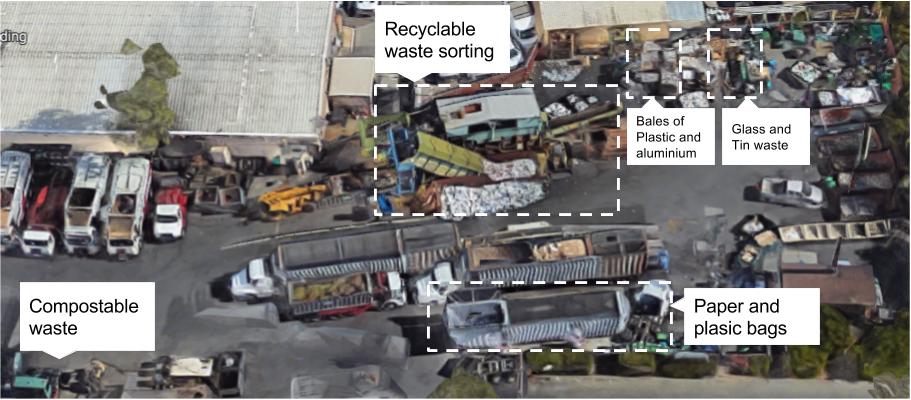
Compostable Waste
Items that can be put
- All items that are biodegradable can be put in compostable
- Paper/paper plates in contact with food and cardboard in contact with food (pizza boxes for instance)
- Food waste, kitchen waste, paper towels (for instance, from gym)
- Plastic that says compostable
Processing
- There is no sorting and all waste marked as compostable is sent to the composting plant
- Compostiting facility requires that most of it is compostable and a load can get rejected for non-compliance
- All is not lost Even though is no screening at the composting plant the microbes themselves do not break non-compostable materials
- After composting is done it is passed through a sieve and anything that doesn’t pass (including non-compostable material) is rejected as residue
Recyclable waste
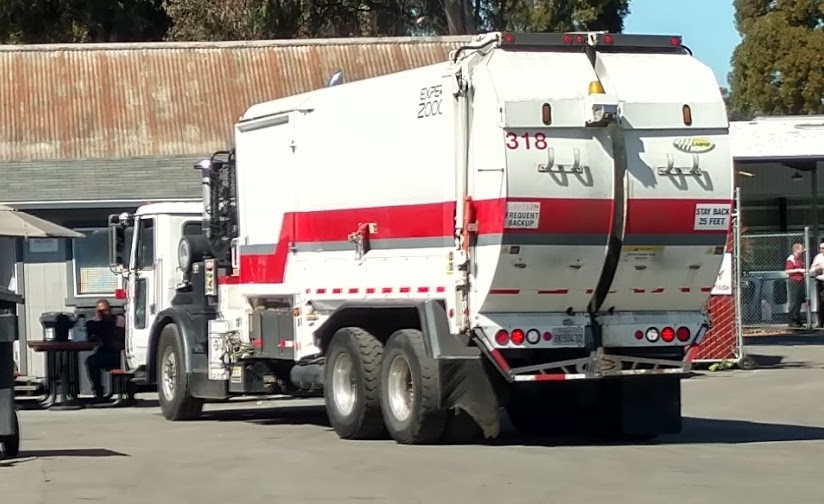
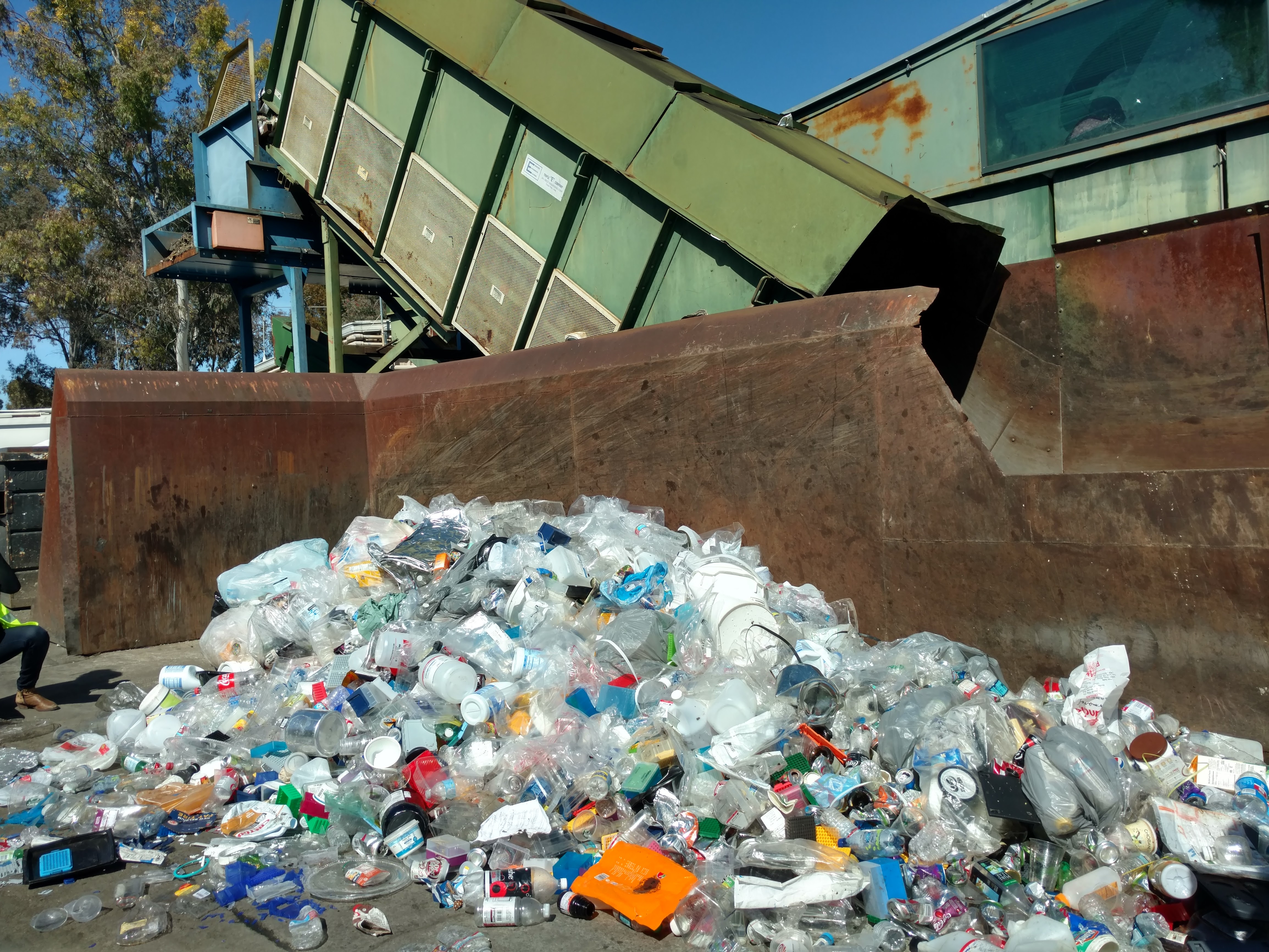
This includes waste that can be recycled via various methods. This includes paper, glass, metals and various kinds of plastics. The different kinds of materials need to be separated out and recycled differently. The process of separation is simple and is handled in the recyclable waste sorting machine.
However, it is expected that more paper is used in a university setting. Collecting paper separately is more effective given the volume. Hence, Stanford adopts dual channel recycling, which requires paper to be collected separately from other recyclable wastes. This separation at source results in better recycling rates, while being slightly more inconvinient than single channel recycling.
Recyclable waste sorting machine

The machine used at the Stanford facility is fairly old, one of the pioneers of its times, still serving its purpose well. All of the trash is fed into a hopper which spreads it over a conveyor belt. First tin containers are separated out using a strong electromagnet. After this, aluminium being lighter is blown away with a calibrated fan. I’m not sure if plastics are separated by blowing air and whether it happens before or after aluminium separation. However, there are different kinds of plastics, out of which only some are recyclable. Since they need to be segregated further, it might just be the case that plastics are manually taken out and placed into two piles depending on their recyclability. Finally glass remains and is collected separately. Plastic and aluminium is compacted and made into bales. Tin and glass is collected and kept in large containers.
Recyclable waste : Paper
Items that can be put
- Paper
- Can be wet, doesn’t matter
- Shouldn’t be in contact with food (oils)
- envelopes with plastic on address covers are okay
- envelopes with bubble wrap on in it is not okay (TRASH)
- Plastic bags:
- Grocery bags, produce bags are okay
- Plastics from supermarket containing veggies (spinach for instance) are not okay (TRASH)
- Any plastic bags in contact with food are TRASH
Processing
All of paper and plastic is dumped into a large container. Plastic floats on top by virtue of being light. All this plastic is taken out and sold. Plastic in contact with food are no longer light and cannot be separated. Also they contaminate other good paper. The remaining paper is sold to a separate paper recycler. Paper recycling is a water based process and unlike plastic, metal or glass, not a heat based process. Oily paper needs to be treated with chemicals to take the oil out and hence shouldn’t be put for paper recycling.
Recyclable waste : Metal
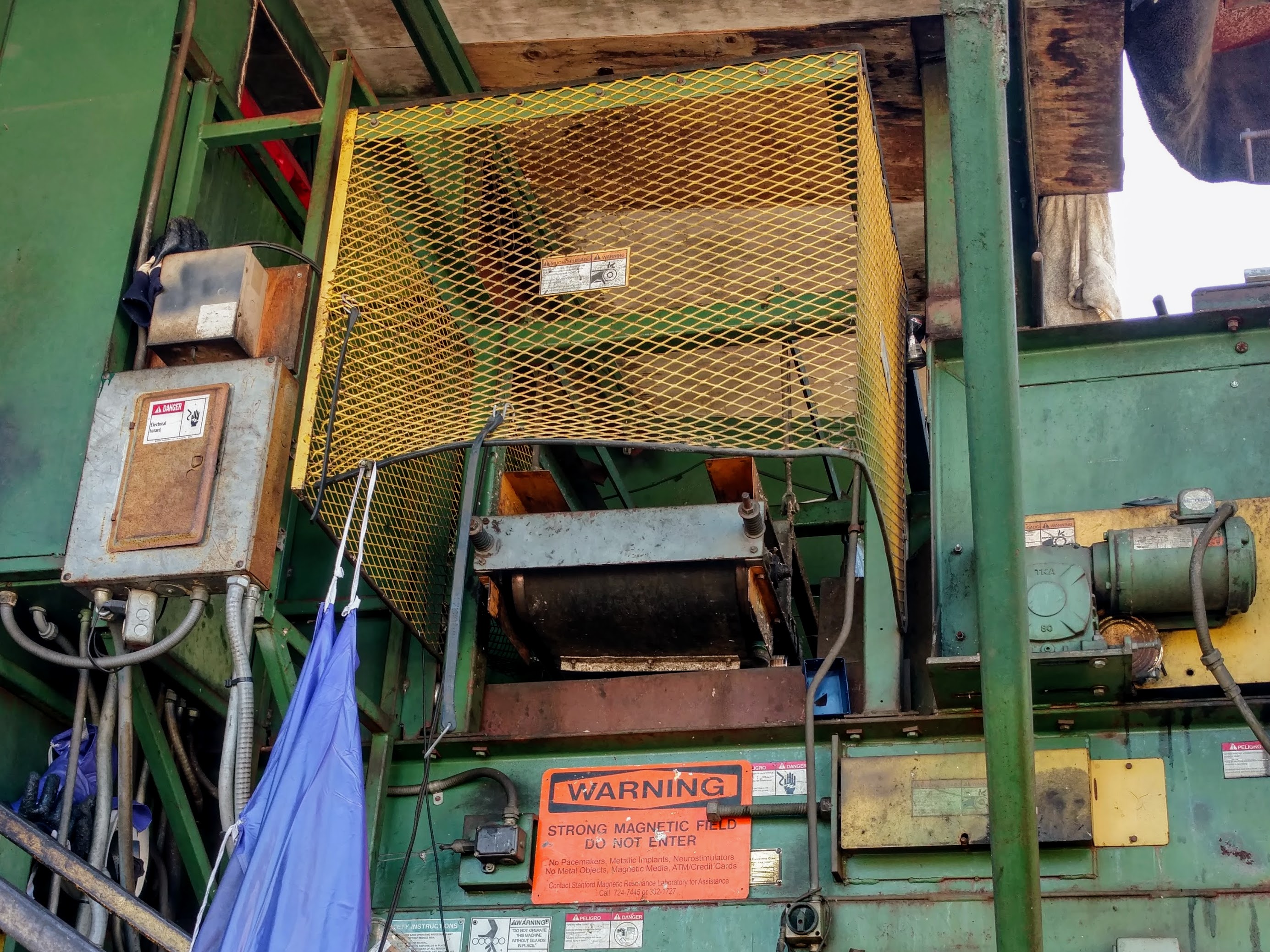
Metals like aluminimum (from containers and foils for instance) and tin cans.
Items that can be put
- All kinds of aluminimum and tin containers
- Can be in contact with food
Processing
The tin cans are separated using a large electromagnet over the conveyor belt. Aluminium is separated via a fan calibrated to blow only aluminium. Metals are processed by melting them at very high temperatures. At these temperatures, paper, plastic and food scraps get burnt. So it doesn’t matter if metals are cleaned well. The recommendation to empty food from metals containers is simply to keep the household recycling containers clean.
Recyclable waste : Glass
Items that can be put
- All kinds of glass containers.
- Labels and contact with food is fine
Processing
Glass is melted at a high temperature in a nearby glass factory. This temperature is enough to burn food and paper. Similar to metals, it is recommended to clean glass containers only to keep household recycling containers clean.
Recyclable waste : Plastic
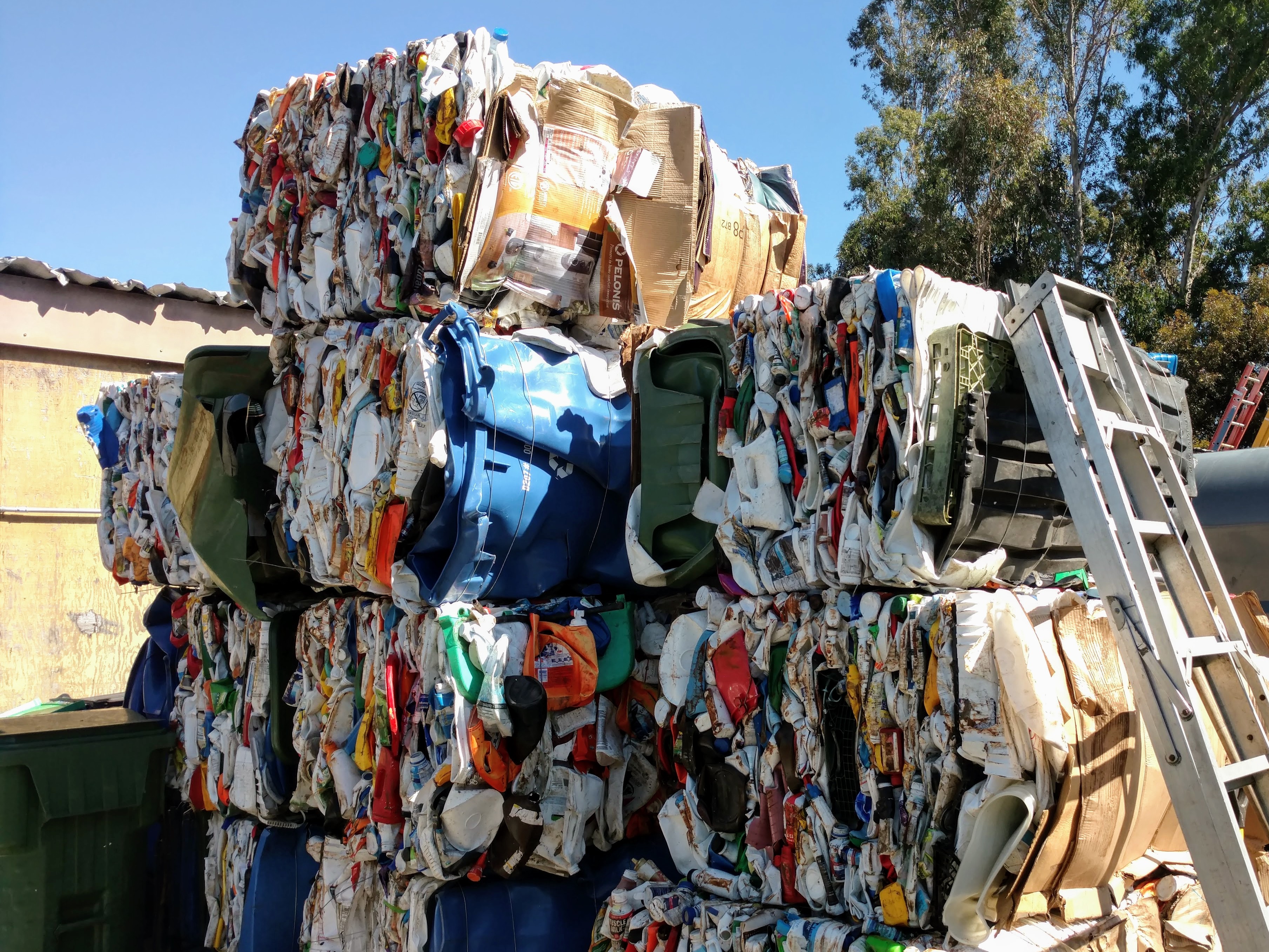
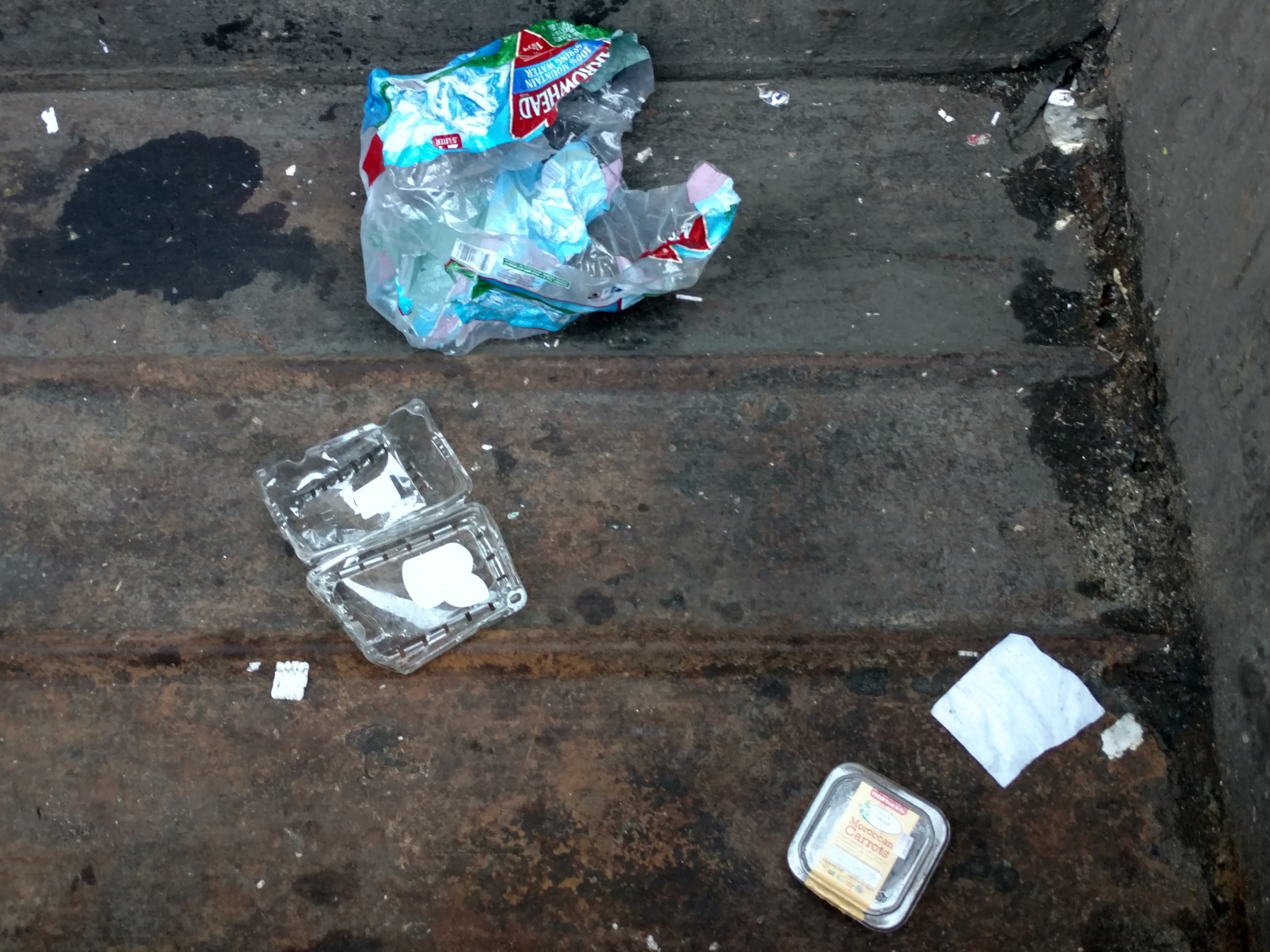
Not all plastic gets recycled Getting plastic recycled is subject to market fluctuations. For instance, since early 2016 due to falling oil prices, it is cheaper to make virgin plastic than to recycle it. There are many different kinds of plastics and there is a separate demand and supply curve for each kind.
Items that can be put
- Any kind of plastic container
- No plastic bags (as they interfere with the separation)
- No use-and-throw plastic cutlery and utensils (because of food contamination)
Processing
Plastic waste needs to be separated into two piles depending on whether it is economically viable to recycle a particular kind of plastic. This job is done by workers in this facility. The recommendation is that people should put all kinds of plastic containers for recycling and the burden of sorting would be borne by the facility. After this plastic is compacted and made into bales to be sent to offsite recycling facility where it is melted.
Trash
Trash is the default category (when all else fails) and is meant to be sent to landfill. According to recent audits as much as 25% trash is recyclable and around 30% compostable. Hence good waste segregation practices can divert at least 50% of waste from going to landfill
Items that should be put
These are just a few typical examples
- Disposable plastic cutlery not marked as compostable
- Plastic bags and thin plastic contaminated with food
- Envelopes with bubble wraps
Processing
No manual sorting is done on site and is sent for dumping into landfill.
Credits: Substantially based on notes taken by Nandita